Sotheby’s Unveils Highlights from Sammlung Oppenheimer
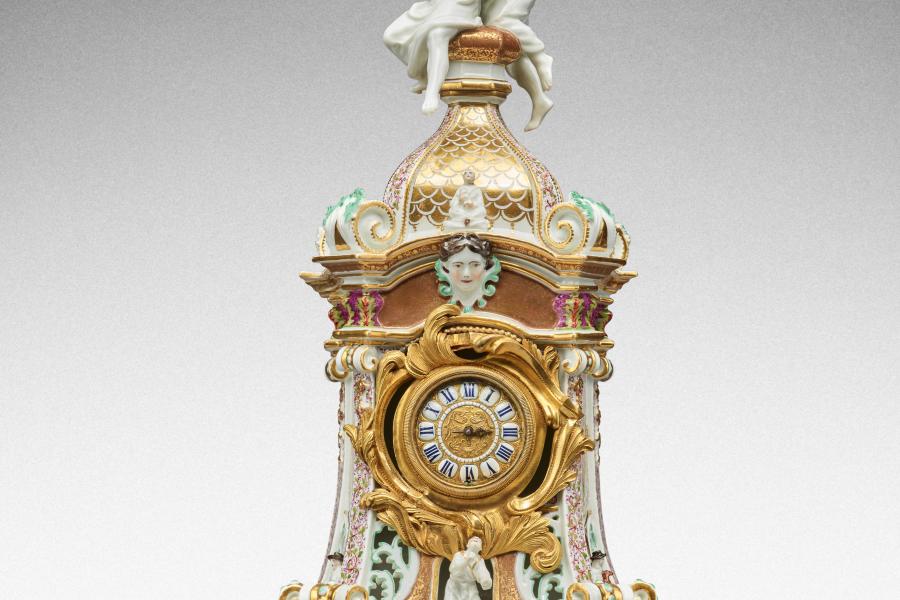 10776 Lot 64 A highly important documentary and dated Meissen mantel clock case - Mit freundlicher Genehmigung von: sothebys.com
10776 Lot 64 A highly important documentary and dated Meissen mantel clock case - Mit freundlicher Genehmigung von: sothebys.comWas: Auktion
Wann: 14.09.2021
All of the works on offer will be on view in Sotheby’s York Avenue galleries beginning 7 September, ahead of the live auction.
ABOUT THE COLLECTIONFranz and Margarethe Oppenheimer were connoisseur collectors, determined to build a magnificent Meissen collection at a time when it was still possible to acquire important pieces as they were being deaccessioned from the Royal collections in Dresden. Dr. Franz Oppenheimer, a native of Hamburg, was a lawyer and became part owner and CEO of Emanuel Friedlaender und Co, a private company that dominated the Silesian coal industry before WWII. Margarethe, whom he married in 1902, was born in Vienna and was his partner in building their porcelain collection.
The couple lived in a grand apartment block on Regentenstrasse in Berlin, immediately next to the Tiergarten – the heart of Berlin’s collecting community in the early 20th century. In 1927, like many serious Berlin connoisseurs, the couple commissioned a private catalogue of their collection to be written by Professor Ludwig Schnorr von Carolsfeld, curator of the nearby Berliner Schlossmuseum. Professor von Carolsfeld catalogued 240 sets and individual pieces of porcelain, a number of which are featured in the September sale. The couple continued to collect after the 1927 catalogue and added at least 126 objects to their holdings, each of which were marked with red inventory numbers.
Once the Nazis came to power Franz Oppenheimer was persecuted because of his Jewish origins. As a consequence, in around December 1936, he and Margarethe fled from Berlin to the comparative safety of Vienna, having paid punitive emigration taxes to the Nazi Government. They rented an apartment close to the Belvedere in Vienna’s third district and were able to take some possessions, including part of their Meissen collection, with them.
The couple’s exile in Vienna did not last long. German troops entered Austria on March 12, 1938, and Adolf Hitler proclaimed the Anschluss of Austria into Germany the following day. The Oppenheimers escaped to Budapest the day before the Anschluss carrying only hand luggage. From Hungary they travelled via Sweden and Colombia before finally reaching their new home in New York three and a half years later - in December 1941. By 1941, their resources had been further eroded by another tranche of Flight Tax that they had to pay to emigrate from Austria. The couple chose to spend the remainder of their lives in an apartment on East 86th Street in Manhattan, just a few blocks from Sotheby’s present-day headquarters.
The Nazi authorities confiscated everything that they found in the Oppenheimers’ Vienna apartment but discovered that the collectors had succeeded in removing at least two crates of their most valuable porcelain before their flight. It is likely that some of the porcelain in this sale was smuggled out of Vienna to keep it out of Nazi hands. It is not known precisely when the objects in this sale were lost to the Oppenheimers, however they were with their next owner, another great connoisseur-collector and an active opponent of the Nazi regime, Fritz Mannheimer, before his premature death in 1939.
Mannheimer was born in Germany in 1890 and moved as a young man to Amsterdam where he established the Dutch branch of the Berlin based Mendelssohn Bank in 1920. In less than 20 years, he built both a thriving bank and an art collection of outstanding breadth and quality. Like the Oppenheimers, he commissioned a scholar, Otto von Falke, late director of the Berlin Kunstgewerbemuseum, to catalogue his collection. The porcelain in this sale was all acquired after von Falke completed his work in March 1936.
After Kristallnacht, on 9 November 1938, the Mendelssohn Bank was shuttered by the Nazis and Fritz Mannheimer lost its collaboration, and its balance sheet, for his Amsterdam bank. While Mannheimer kept trading, his last major deal was the refinancing of a part of the French National debt in 1939; this failed – partly due to the deteriorating political situation in Europe – and the young banker was obliged to buy back unplaced French bonds at his own expense. This triggered a severe liquidity crisis for his bank and for himself. On August 8, 1939, in the midst of the bank’s crisis, Mannheimer left for a break in France. Upon his arrival in Vaucresson, he suffered a massive heart attack and died only a few hours later.
Mannheimer’s bank stopped its operations immediately after his death. An audit showed the bank carried a large debt of over 42 million guilders, for which the collector's personal estate was jointly liable. Experts from the Rijksmuseum were brought in and valued the art collection at six and a half million guilders and Mannheimer’s executors decided to liquidate it as a contribution to the Bank’s losses. A member of the SS based in Holland, acquired the collection for Adolf Hitler in 1941.
As Allied bombing placed the Führer’s art holdings in peril, the Meissen that had been acquired from Mannheimer’s estate was moved for safe keeping first to Vyšší Brod Monastery in Bohemia and later to the salt mines in Bad Aussee. The porcelain was eventually discovered by Allied Monuments Officers and was transferred to the Central Collecting Point in Munich in 1946. The collection was sent back to the Netherlands between 1945 and 1949. After the recovery of the Mannheimer collection, the collector’s executors did not seek restitution, as they would have been obligated to refund the price paid by the Führer’s curators, and the collection passed into Dutch State holdings. Of the porcelain, some was held as property available for restitution and some was transferred to the Rijksmuseum.
Earlier this year the Restitution Commission of the Netherlands accepted that the porcelain in this sale that had belonged to the Oppenheimers must be restituted to their heirs.
AUCTION HIGHLIGHTSThe collection of Franz and Margarethe Oppenheimer exemplifies their penchant for chinoiserie taste, an all-encompassing term from the Victorian era that was applied to pseudo-Asian forms and decorations invented in Europe from the 17th century onward, in response to the exoticism and novelty of contemporary Asian imports. The origins of many of the pieces collected by the Oppenheimers can be associated with royal commissions for Meissen porcelain to decorate the interiors of Augustus the Strong’s colossal ‘porcelain palace’, conventionally known as the Japanese Palace, on the banks of the river Elbe in Dresden-Neustadt.
The September auction is led by a Highly Important Documentary and Dated Meissen Mantel Clock Case from 1727 – undoubtedly the rarest piece in the Oppenheimer collection and illustrative of the Chinoiserie style they so loved (estimate $200/400,000). This magnificent Meissen clock case can be counted among the most ambitious and successful of sculptural models produced at the factory at this early date. The Oppenheimers were able acquire the clock case after it had passed through two prestigious 19th century English collections, at some point between 1923 and 1927. The present clock was originally owned by Ralph Bernal, a politician and discerning art collector, who later became president of the British Archaeological Society in 1853 and whose collection garnered the attention of prestigious museums and connoisseurs alike, including the Rothschilds, the Marquess of Hertford, Marlborough House, the South Kensington Museum, the Tower Armory, and the British Museum. Sir Anthony de Rothschild acquired this particular clock in April 1855 for £120.
At least five varying clock case models were produced at Meissen in the late 1720s and early 1730s, and one can presume that Meissen clocks from this date were intended for the royal industry’s principal client and patron, Augustus the Strong, and were to be included in the rooms of the Japanese Palace. According to the 1733 Specification von Porcilan – a listing of the Meissen porcelain ordered for the Japanese Palace, though not necessarily produced – a total of 14 clocks were ordered. The dating of this compilation – the year of Augustus the Strong’s death – is largely a reflection of the initial orders of the late 1720s. The 14 clocks were allocated to four rooms in the piano nobile and it is even known exactly where on the walls the clocks were intended to be placed.
Only five clocks of this model appear to have survived by the early 20th century, each with slight variations in the modeling, rendering all of them unique. Of the five, two are in museum collections: in the Hermitage in St. Petersburg and the Hetjens-Museum in Düsseldorf.
A Pair of Meissen Augustus Rex Yellow-Ground Baluster Vases and Covers further distinguishes the offering (estimate $150/250,000). According to the 1733 Specification, 'Hoch-Gelb-Couleur', or deep-yellow-color, Meissen porcelain was allocated to so-designated Room 3 of the Japanese Palace, in between rooms for seladon, a shade of green, and dark-blue-ground Meissen porcelains. This large order of yellow-ground porcelain included approximately 267 vases, bottles and beakers, including 6 garnitures formed of seven vases and 2 garnitures formed of five vases, among other pieces. A yellow-ground ogee vase decorated in the same manner and formerly in the Royal Collections of Saxony, Dresden, may once have formed a garniture with the present vases. That vase, missing since 1945, was originally installed in the tower room of the Royal Palace. In addition, the somewhat unusual leaf-form cartouches seen on the present vases are recorded on Chinese Kangxi vases, examples of which were in Augustus the Strong's collection, now in the Porzellansammlung, Dresden.
A Very Rare Pair of Meissen Augustus Rex Underglaze Blue-Ground Beaker Vases are also in the sale (estimate $70/100,000). An unusual feature of the present pair of vases is the use of two alternating different green enamels on the cartouches, the significance of which is uncertain and invites further research. One possibility is that painters worked in their own personalized enamel palettes which could indicate two different hands painted these vases. The same feature is seen on a smaller underglaze blue-ground vase of this form, in the collection of the Porzellansammlung, Dresden.
An Extremely Rare and Probably Unique Pair of Meissen Augustus Rex Hexagonal Vases and Covers, likely to be the only pair of Meissen vases of this type recorded in literature, also highlights the September sale (estimate $80/120,000). While the 18th century provenance of these vases remains unknown, the survival of at least three rare red-anchor Chelsea porcelain vases, circa 1752-56, which appear to be direct copies, suggests a possible English ownership by the mid-18th century. Whilst it cannot be proven with certainty, it seems probable that the Chelsea porcelain factory had access to the present vases. A potential 18th century owner of the vases is Sir Charles Hanbury Williams, who was British Envoy to the Saxon Court between 1747-49 and 1751- 54.
An Extremely Rare Pair of Meissen Augustus Rex Underglaze-Blue-Ground Beaker Vases round out this spectacular group (estimate $80/120,000). After the death of Augustus the Strong, beaker vases of this type were sent to the Dresden residence to be installed in the Turmzimmer. A remarkable early series of photographs show how the Meissen porcelain was displayed in Turmzimmer and shows surviving vases of this form. A powder blue beaker vase of this form and size, which features the same painted floral band at the center, remains in the Porzellansammlung, Dresden, while another is in the Reiss-Museum, Mannheim. The Oppenheimers acquired these vases separately and only owned one by 1927.
Additional highlights from the sale include: a Very Rare Meissen Augustus Rex Large Seladon-Ground Vase (estimate $50/70,000), likely one of five large Meissen porcelain bottle vases in this color that were listed as delivered to the Japanese Palace in December 1737; a Unique Meissen Armorial Waste Bowl from the Service Made for Clemens August, Elector of Cologne (pictured above, estimate $40/60,000), a smaller version of which is now in the Museum für Angewandte Kunst, Cologne, together with other pieces from the service; and an Extremely Rare Meissen Famille Verte Goblet (estimate $50/70,000), one of only five or six pieces of Meissen porcelain painted in this distinctive style that appear to be recorded.
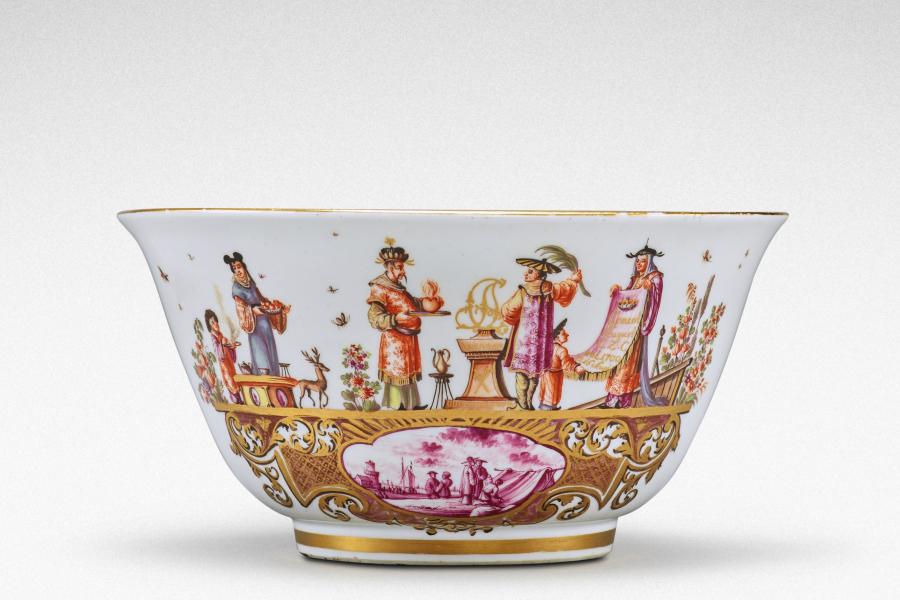 10776 Lot 78 A unique Meissen armorial waste bowl from the service made for Clemens August, Elector of Cologne - Mit freundlicher Genehmigung von: sothebys.com / Sotheby’s Auktionshaus
10776 Lot 78 A unique Meissen armorial waste bowl from the service made for Clemens August, Elector of Cologne - Mit freundlicher Genehmigung von: sothebys.com / Sotheby’s Auktionshaus  10776 Lot 104 Manheimer Collection in situ - Mit freundlicher Genehmigung von: sothebys.com / Sotheby’s Auktionshaus
10776 Lot 104 Manheimer Collection in situ - Mit freundlicher Genehmigung von: sothebys.com / Sotheby’s Auktionshaus 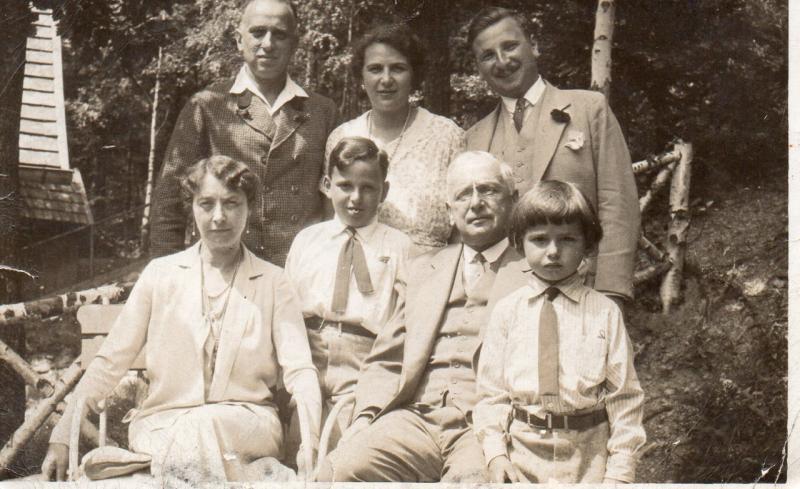 An Oppenheimer family Portrait, taken in the mid-1930s - Mit freundlicher Genehmigung von: sothebys.com / Sotheby’s Auktionshaus
An Oppenheimer family Portrait, taken in the mid-1930s - Mit freundlicher Genehmigung von: sothebys.com / Sotheby’s Auktionshaus.
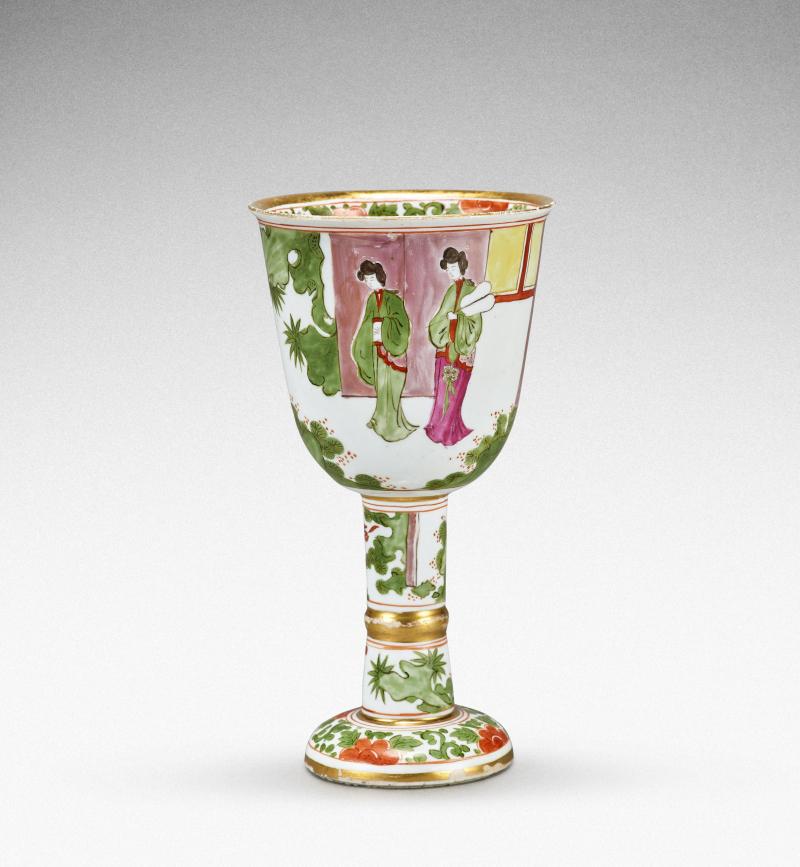 10776 Lot 24 An extremely rare Meissen famille verte goblet - Mit freundlicher Genehmigung von: sothebys.com / Sotheby’s Auktionshaus
10776 Lot 24 An extremely rare Meissen famille verte goblet - Mit freundlicher Genehmigung von: sothebys.com / Sotheby’s Auktionshaus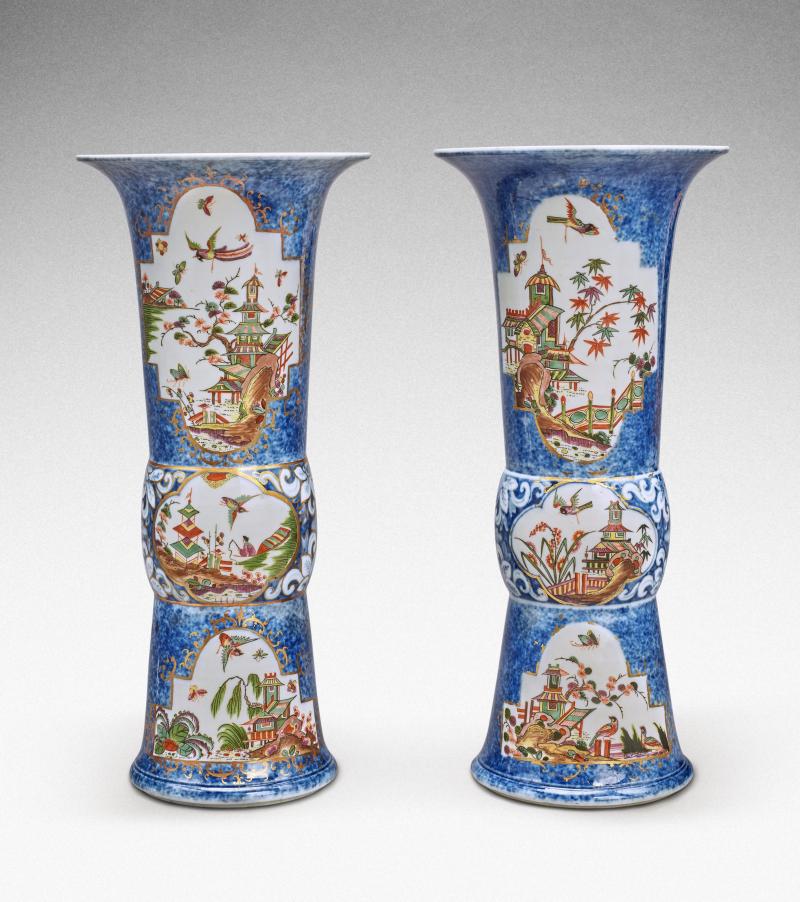 10776 Lot 49 An extremely rare pair of Meissen Augustus Rex underglaze-blue-ground beaker vases - Mit freundlicher Genehmigung von: sothebys.com / Sotheby’s Auktionshaus
10776 Lot 49 An extremely rare pair of Meissen Augustus Rex underglaze-blue-ground beaker vases - Mit freundlicher Genehmigung von: sothebys.com / Sotheby’s Auktionshaus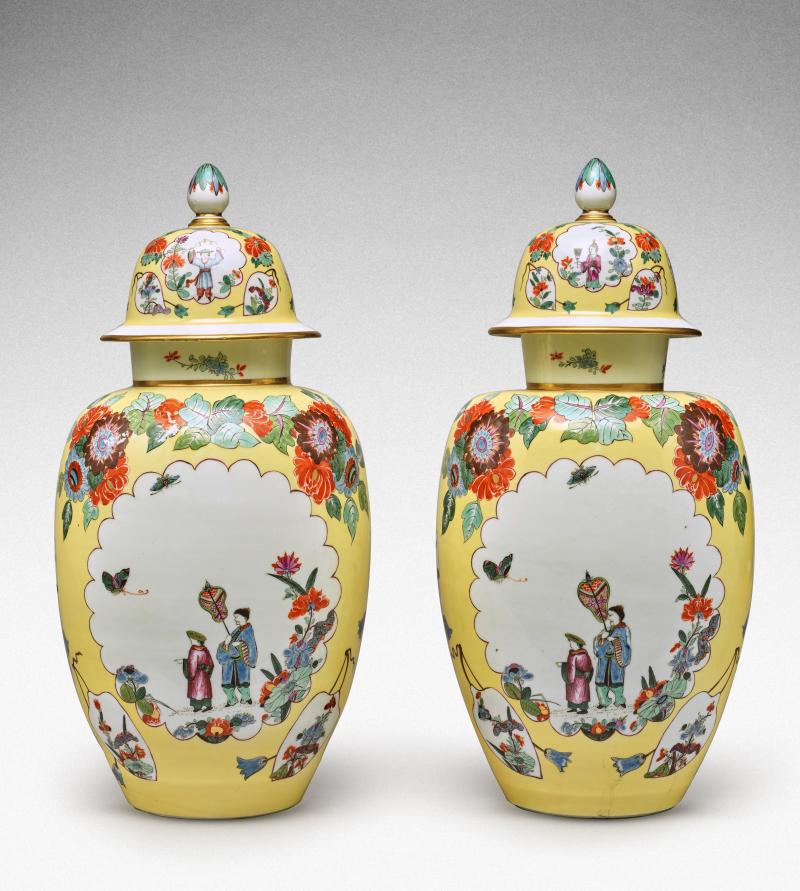 10776 Lot 104 A pair of Meissen Augustus Rex yellow-ground baluster vases and covers - Mit freundlicher Genehmigung von: sothebys.com / Sotheby’s Auktionshaus
10776 Lot 104 A pair of Meissen Augustus Rex yellow-ground baluster vases and covers - Mit freundlicher Genehmigung von: sothebys.com / Sotheby’s AuktionshausCopyright © 2024 findART.cc - All rights reserved


